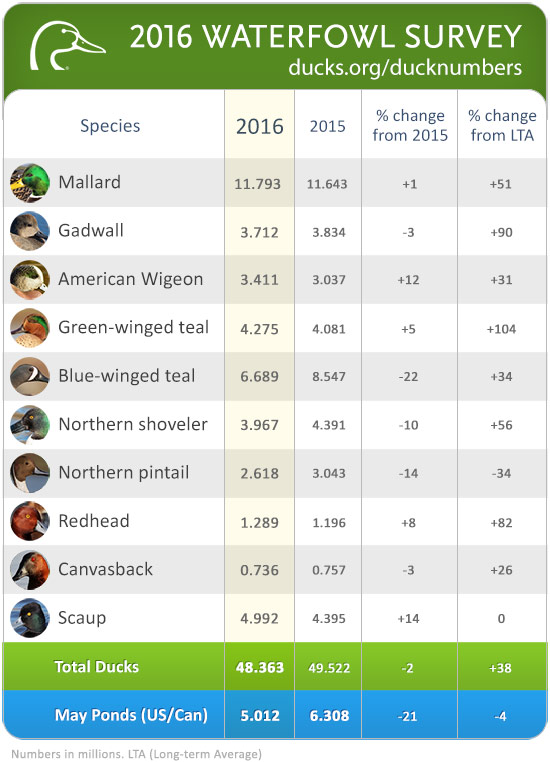Species-by-species breakdown, the USFWS Waterfowl Population Survey will help you prepare for the 2016-2017 duck hunting season

To see the most recent 2025 Waterfowl Population Survey results, please click here.
Most species remain well above long-term averages
The U.S. Fish and Wildlife Service (FWS) today released its report on 2016 Trends in Duck Breeding Populations, based on surveys conducted in May and early June by FWS and the Canadian Wildlife Service. Overall duck numbers in the survey area are statistically similar to last year and remain steady. Total populations were estimated at 48.4 million breeding ducks in the traditional survey area, which is 38 percent above the 1955-2015 long-term average. Last year's estimate was 49.5 million birds. The projected mallard fall flight index is 13.5 million birds, similar to the 2015 estimate of 13.8 million.

The main determining factor for duck breeding success is wetland and upland habitat conditions in the key breeding landscapes of the prairies and the boreal forest. Conditions observed across the U.S. and Canadian survey areas during the 2016 breeding population survey were generally poorer than last year. The total pond estimate for the U.S. and Canada combined were 5.0 million, which is 21% below the 2015 estimate of 6.3 million and similar to the long-term average of 5.2 million.
The spring surveys provide the scientific basis for many management programs across the continent, including hunting season dates and bag limits. Individual states set their hunting seasons within a federal framework of season length, bag limits and dates. Hunters should check the rules in their states for final dates and bag limits.
Ducks Unlimited uses cookies to enhance your browsing experience, optimize site functionality, analyze traffic, and deliver personalized advertising through third parties. By continuing to use this site, you agree to our use of cookies. View Privacy Policy